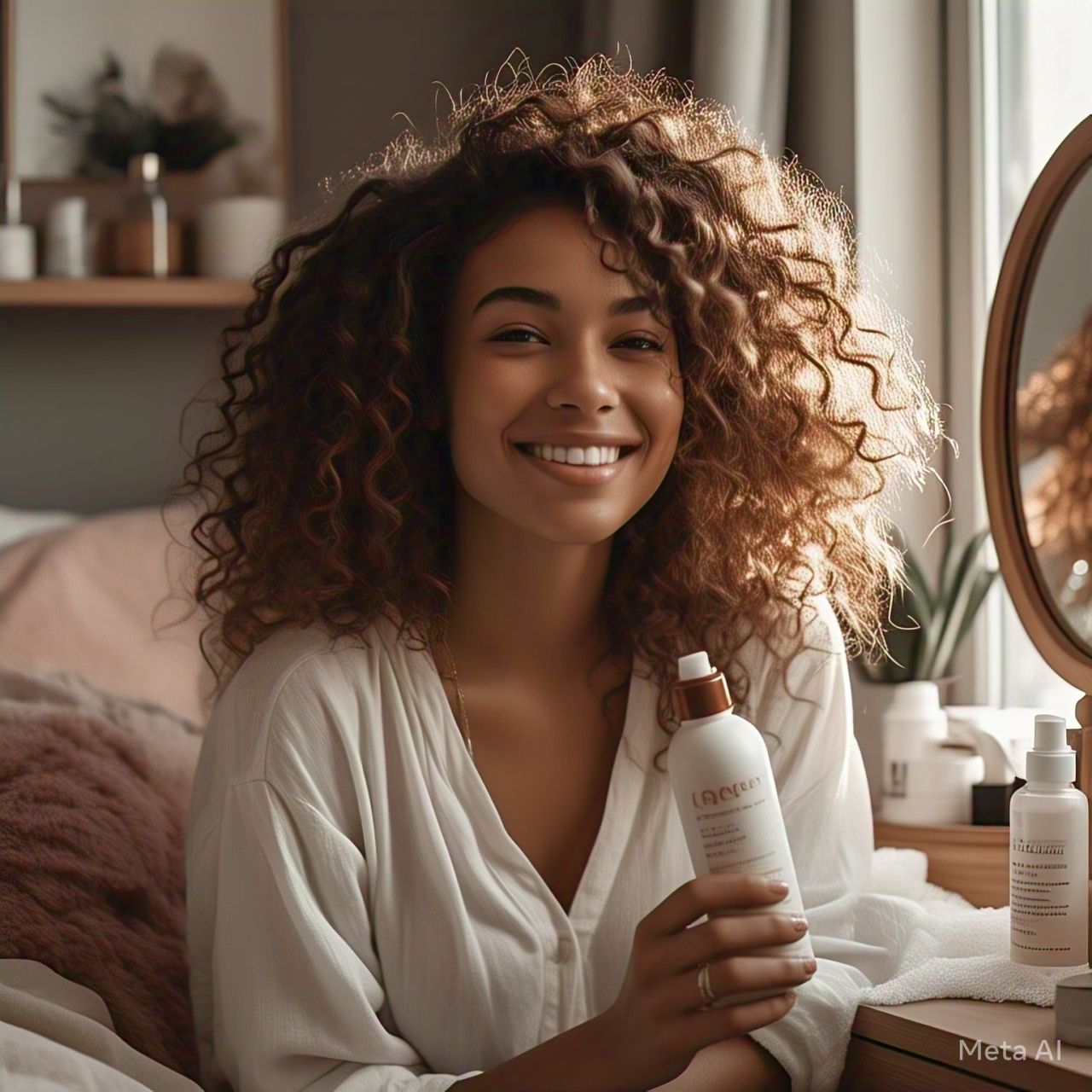Understanding Hair Damage and the Role of Conditioners
Hair damage is a widespread concern affecting individuals across age groups, hair types, and lifestyles. Whether the result of heat styling, chemical treatments, environmental exposure, or poor haircare practices, damaged hair is more than just an aesthetic issue—it signals the deterioration of the hair’s internal and external structure. One of the most vital steps toward restoring hair to its healthy state is the use of the right conditioner. In this first part of the article, the discussion centers on the causes of hair damage, how to recognize signs of weakened hair, and why conditioners play a fundamental role in reversing that damage.
Causes of Hair Damage in Everyday Life
Hair can suffer from a multitude of stressors. Among the most common are heat styling tools, such as flat irons, curling wands, and blow dryers, which weaken the hair cuticle with repeated use. Excessive heat breaks down the keratin structure within the hair shaft, leaving it vulnerable to breakage. Chemical treatments such as bleaching, coloring, perming, and relaxing disrupt the natural pH balance and strip moisture, making strands brittle and prone to snapping.
Environmental factors also contribute significantly to hair deterioration. Exposure to ultraviolet radiation, humidity, pollution, and hard water minerals can slowly degrade hair health. Even the simple act of washing hair with harsh shampoos or brushing it while wet can exacerbate wear and tear over time. Poor diet and stress further compound the problem by depriving the hair of essential nutrients.
Recognizing Signs of Damaged Hair
Identifying damaged hair early allows for quicker intervention and better recovery outcomes. Telltale signs include dryness, split ends, frizziness, dullness, tangling, and increased shedding. Damaged hair often loses its elasticity, meaning it snaps rather than stretches when pulled. It may feel rough to the touch, and its appearance becomes lifeless and thin. In more severe cases, the cuticle layer is so compromised that the cortex—the inner structure of the hair—is exposed.
Some individuals may experience uneven porosity in different areas of their hair, meaning some parts absorb moisture quickly but fail to retain it. This inconsistency leads to uneven hydration and poor styling results. Hair may also become more difficult to manage, resisting combing or brushing and becoming more susceptible to knots.
How Conditioners Combat Damage
Conditioners are formulated to replenish lost moisture, restore protein, and smooth the cuticle layer. By doing so, they help to temporarily repair and reinforce the hair shaft. Most conditioners contain a blend of emollients, humectants, proteins, and silicones. These ingredients work together to soften, hydrate, and strengthen the hair while providing a protective barrier against future damage.
Emollients coat the hair to provide smoothness and shine, while humectants draw moisture into the hair shaft. Proteins help rebuild weakened areas by filling in gaps in the cuticle and cortex. Silicones, often misunderstood, offer protective coating and seal moisture, reducing friction during combing and styling.
Conditioners come in various forms, including rinse-out, leave-in, and deep-conditioning treatments. Each type serves a different function depending on the severity of the damage and the individual’s hair type. Rinse-out conditioners are typically used after every shampoo to restore balance and softness. Leave-in conditioners offer lightweight hydration throughout the day, while deep conditioners and masks deliver concentrated nourishment meant to be used weekly.
The Science Behind Restorative Conditioners
Not all conditioners are created equal. Restorative conditioners are formulated with targeted active ingredients designed to address specific types of damage. For instance, some contain hydrolyzed keratin or silk proteins, which penetrate the hair shaft to repair internal structures. Others include plant-based oils, like argan or jojoba, known for their deep moisturizing and antioxidant properties.
Some conditioners also contain amino acids, the building blocks of protein, which help reinforce the hair’s strength from the inside out. Panthenol, a derivative of vitamin B5, is frequently used to improve hair elasticity and sheen. Additionally, botanical extracts such as aloe vera, chamomile, and green tea provide soothing and regenerative benefits.
These formulations work synergistically to reduce breakage and improve manageability. By restoring the hair’s ability to retain moisture and resist external stressors, restorative conditioners form a vital part of any damage-repair regimen. They not only repair but also protect, helping users transition from brittle, lifeless strands to smoother, shinier, and more resilient hair.
Choosing the Right Conditioner Based on Hair Type and Damage Level
When it comes to restoring damaged hair, there is no universal solution. Hair damage manifests in different ways depending on the individual’s hair texture, porosity, lifestyle, and exposure to damaging agents. In order to effectively repair hair, one must understand not only the cause of the damage but also the type of conditioner best suited to meet their unique needs. Part 2 of this article delves deep into the different categories of conditioners available on the market today, their specific benefits, and how they align with individual hair types and damage levels. From fine, limp strands to thick, curly locks, each hair type requires specialized care, and choosing the right product can determine the success of a hair restoration routine.
Understanding Hair Types and Their Needs
Hair types are typically classified based on texture and curl pattern. Straight hair tends to be smooth and prone to oiliness. Wavy hair sits between straight and curly, offering more volume but sometimes uneven texture. Curly hair is characterized by its spiral structure, which makes it more prone to dryness and frizz. Coily or kinky hair has the tightest curl pattern and often requires intense hydration due to its fragility.
Each hair type has different porosity levels, which describe how well the hair absorbs and retains moisture. Low-porosity hair resists moisture, making it harder for conditioners to penetrate. High-porosity hair absorbs moisture quickly but also loses it just as fast. Medium-porosity hair generally responds best to most products but still needs targeted care when damaged.
The type of damage also matters. Heat damage causes dryness and elasticity loss. Chemical damage often results in weak, brittle strands. Environmental damage creates a dull appearance, while mechanical damage from brushing or tight hairstyles leads to breakage. The correct conditioner must address these specific issues while respecting the natural properties of the hair.
Rinse-Out Conditioners and Their Role in Daily Maintenance
Rinse-out conditioners are the most common type of conditioner used immediately after shampooing. Their primary role is to restore moisture stripped away during cleansing. For individuals with mildly damaged hair, these conditioners help maintain a healthy moisture-protein balance and soften the cuticle layer, reducing frizz and improving manageability.
For fine or oily hair types, lightweight rinse-out conditioners infused with ingredients like glycerin or panthenol provide hydration without weighing the hair down. Silicone-free formulas are often recommended for those who want to avoid buildup. Medium-textured hair benefits from richer formulas containing ingredients like shea butter or jojoba oil, which moisturize without leaving a greasy finish. Thick or coily hair may require ultra-moisturizing rinse-out conditioners with coconut oil, castor oil, or cupuaçu butter to provide long-lasting hydration.
Rinse-out conditioners also play a preventive role. They act as a daily shield, protecting the hair from pollution, UV exposure, and mechanical stress. When used consistently, they help maintain the improvements achieved through more intensive treatments.
Deep Conditioners and Repair Masks for Intensive Restoration
When hair experiences moderate to severe damage, basic conditioning may not be sufficient. Deep conditioners and masks are specially formulated to penetrate deeper into the hair shaft and repair internal damage. These products are typically used once a week and require a longer application time to be effective.
Deep conditioners often contain a higher concentration of proteins such as hydrolyzed keratin, silk, or wheat protein. These ingredients help fill in structural gaps in the cortex and strengthen the shaft. For heat-damaged hair, protein-rich masks can restore elasticity and reduce the risk of further breakage.
Moisture masks, on the other hand, are ideal for dry, brittle hair caused by over-processing or sun exposure. These products rely on humectants like aloe vera, honey, and hyaluronic acid to draw moisture into the strand, along with emollients like avocado oil or cocoa butter to lock it in.
Combination masks offer both protein and moisture for balanced repair. These are well-suited for hair that has multiple types of damage or for individuals unsure of their hair’s specific needs. The key is not to overuse protein-based treatments, as this can lead to stiffness and breakage in protein-sensitive hair types. Listening to the hair’s response over time helps determine the right frequency and product strength.
Leave-In Conditioners for Lightweight Protection and Flexibility
Leave-in conditioners are designed to remain in the hair after washing and provide ongoing moisture, protection, and manageability throughout the day. These formulas are typically lighter than rinse-out products and do not require rinsing, making them ideal for styling and on-the-go hydration.
Fine and straight hair types benefit from water-based sprays or lightweight creams that do not add weight or oiliness. These conditioners can help prevent static, make detangling easier, and create a smooth surface for heat styling.
Wavy to curly hair types often benefit from leave-in conditioners with additional humectants and anti-frizz properties. Products with flaxseed extract, marshmallow root, or rice protein provide slip and hydration while enhancing natural curl patterns.
Coily hair types typically need richer leave-ins with heavier oils like mango butter or castor oil. These formulas provide slip for detangling and protection against breakage caused by daily manipulation.
Leave-ins are also ideal for protecting color-treated hair, as they help seal the cuticle and reduce fading. Some formulations include UV filters and thermal protection, adding a layer of defense against environmental damage.
Conditioners Formulated for Color and Chemically Treated Hair
Hair that has undergone coloring, bleaching, perming, or relaxing requires specialized care to address the structural changes caused by these processes. Conditioners for chemically treated hair must focus on both restoration and preservation.
Color-protecting conditioners contain ingredients that seal the cuticle to prevent color leaching and fading. These products often include antioxidants such as vitamin E or green tea extract to fight free radicals that degrade pigment. Acidic pH levels help tighten the cuticle, locking in color and preventing brassiness.
For bleached or lightened hair, bond-building conditioners are essential. Ingredients like bis-aminopropyl diglycol dimaleate and citric acid work to rebuild broken disulfide bonds within the hair shaft. These formulas are ideal for people who experience extreme dryness, tangling, and snapping due to lifting agents.
Relaxed and permed hair benefits from conditioners with strengthening properties and soothing botanicals. Silk protein, coconut milk, and aloe vera help restore elasticity and reduce inflammation on the scalp. These products must be chosen carefully to avoid further chemical interaction and irritation.
Customizing Conditioner Use for Mixed Hair Types and Conditions
Many people have combination hair types or multiple forms of damage, requiring a layered approach to conditioning. For example, someone with oily roots and dry ends may use a lightweight rinse-out conditioner on the scalp area while applying a deep mask to the lengths and tips. Others may rotate between moisture-rich and protein-based masks depending on the season, activity level, or styling habits.
Layering products can also improve results. Using a rinse-out conditioner followed by a leave-in treatment provides both immediate softness and long-term hydration. For severely damaged hair, incorporating a weekly deep-conditioning mask in addition to daily conditioning helps accelerate the recovery process.
Ultimately, the success of a conditioner regimen depends on consistent use, proper product selection, and attention to how the hair responds. Understanding one’s unique hair profile—its porosity, density, and damage level—allows for informed choices that support healing and growth.
In-Depth Reviews of the Best Conditioners for Damaged Hair
With a saturated market full of promises, finding the right conditioner to repair damaged hair can feel overwhelming. Many products claim to offer intense hydration, instant softness, or even bond reconstruction, but not all conditioners are created equally. Some excel at repairing chemically treated hair, while others are better suited for heat damage or environmental stress. In Part 3 of this comprehensive guide, the focus turns to a detailed exploration of the top-performing conditioners currently available. Each product reviewed here has gained popularity for its ability to restore strength, manageability, and shine to compromised hair. By examining their ingredient lists, benefits, and target users, this section aims to help readers navigate the world of hair care with confidence and clarity.
Olaplex No.5 Bond Maintenance Conditioner: A Leader in Bond Repair
Olaplex has earned a near-legendary status in the hair care industry, particularly for those who bleach or color their hair frequently. The No.5 Bond Maintenance Conditioner builds on the brand’s patented bond-building technology, which works at a molecular level to repair broken disulfide bonds within the hair shaft.
This conditioner is rich but not greasy, delivering moisture without weighing hair down. Its main strength lies in its ability to fortify strands from within, making it especially valuable for hair that has suffered from intense chemical processing. It also provides a smooth, soft finish and reduces split ends over time. Users with medium to high porosity hair tend to see the most dramatic results, especially when this conditioner is used alongside the matching shampoo and treatment products.
Beyond repairing damage, Olaplex No.5 helps maintain color vibrancy and elasticity, making it ideal for those who regularly use hot tools. While it may not offer immediate results for every user, consistent use over several weeks can lead to visibly healthier and more resilient hair.
Briogeo Don’t Despair, Repair! Deep Conditioning Mask: Botanical Power
Briogeo’s deep conditioner stands out not only for its performance but also for its commitment to clean, naturally derived ingredients. Formulated without silicones, parabens, or sulfates, it is ideal for individuals who want results without synthetic additives.
The formula features a blend of rosehip oil, algae extract, and B-vitamins. These ingredients work together to hydrate the hair, promote elasticity, and improve overall texture. The product targets dry and brittle strands, making it an excellent choice for curly, coily, and high-porosity hair types in need of serious moisture infusion.
This mask is thick in texture and works best when left on the hair for at least ten minutes. Some users prefer to apply it with heat to increase penetration, which enhances the reparative results. While it may not deliver strong protein support for severe breakage, its moisturizing properties are unmatched in its category. With regular use, hair becomes softer, shinier, and less prone to frizz.
Redken Extreme Conditioner: Strength and Fortification for Fragile Hair
Redken’s Extreme line has been a staple in the professional haircare world for decades, and its conditioner is a go-to product for those experiencing breakage and brittleness. The formula centers around Redken’s Strength Complex, which includes proteins, ceramides, and arginine.
What sets this product apart is its balance between strength and softness. Hydrolyzed proteins help reinforce the hair shaft, making it stronger and more resistant to future damage, while ceramides repair the cuticle layer to lock in moisture. It is especially helpful for hair that feels weak or stretches when wet.
This conditioner is most effective on chemically treated, bleached, or heat-styled hair that lacks resilience. It can be used several times a week, depending on hair sensitivity to protein. Results become evident after a few washes, with less breakage during detangling and improved texture throughout the lengths.
Aussie 3 Minute Miracle Moist: Affordable and Effective Hydration
While many high-end conditioners offer luxury formulations, not everyone has the budget for premium products. Aussie’s 3 Minute Miracle Moist bridges the gap between affordability and performance. It provides a fast-acting deep-conditioning experience that suits dry, stressed, or sun-exposed hair.
The formula is infused with Australian aloe, jojoba oil, and sea kelp. These ingredients offer emollient and hydrating benefits, softening the hair cuticle and improving elasticity. The texture is creamy but rinses easily, making it ideal for fine to medium hair types that become dry due to heat styling or environmental exposure.
Though it may not contain bond-repairing compounds or protein-rich complexes, it excels at restoring moisture and shine. For budget-conscious consumers or those seeking a quick repair between intensive treatments, this product delivers visible results with minimal effort.
SheaMoisture Raw Shea Butter Restorative Conditioner: Ideal for Natural and Coily Hair
SheaMoisture has become a trusted name for textured hair care, and its Raw Shea Butter Restorative Conditioner is among its most versatile offerings. Designed for dry, damaged, and transitioning hair, it uses natural oils and butters to restore softness and strength.
This conditioner includes shea butter, argan oil, and sea kelp. Shea butter acts as a powerful emollient that seals in moisture, while argan oil provides shine and slip for easier detangling. Sea kelp adds nutrients and supports hair structure over time.
Ideal for coily, kinky, or thick curly hair, the conditioner can be used both as a rinse-out and a leave-in treatment, depending on the level of hydration needed. It is protein-free, which suits those sensitive to strengthening agents. Consistent use leads to improved manageability, less breakage, and better definition in curl patterns.
Kérastase Resistance Ciment Anti-Usure Conditioner: Salon-Grade Reconstruction
For those looking to invest in a salon-quality repair solution, Kérastase Resistance Ciment Anti-Usure offers a luxurious approach to restoring damaged hair. This product focuses on internal reconstruction, using a Vita-Ciment complex to reinforce the internal structure of hair weakened by heat and chemical treatments.
The conditioner is light yet deeply reparative. It is especially suited for fine to medium hair that suffers from fragility without feeling overly dry. The blend of pro-keratin and ceramides fills in microscopic gaps in the hair cuticle, preventing split ends and smoothing texture.
Results can be noticed almost immediately after application, with hair feeling stronger and more resistant to breakage. Over time, the product contributes to long-term health by preventing future damage while maintaining softness and bounce. While the price point may be higher, many users consider it a worthwhile investment in their hair care routine.
Living Proof Restore Conditioner: Science-Backed Repair for Heat and Environmental Damage
Living Proof’s Restore Conditioner takes a different approach by relying on patented technology developed by scientists at MIT. The product is designed to reverse damage while protecting hair from further exposure to pollutants and heat.
Its main feature is the Healthy Hair Molecule (OFPMA), which creates a weightless shield around each strand, repelling dirt and resisting humidity. The formula also includes emollients and conditioning agents that smooth the hair shaft without leaving a heavy residue.
Particularly effective on hair that suffers from heat styling, color fading, or urban pollution, this conditioner improves hair’s natural defenses while adding shine and softness. It is silicone-free, making it ideal for those seeking a clean formula that still performs at a high level. The conditioner works well on all hair types, though those with fine or medium textures will appreciate the lightweight finish.
Creating the Perfect Conditioner Routine for Long-Term Hair Repair
Using a quality conditioner is an essential first step in restoring damaged hair, but the true transformation lies in developing a consistent and well-rounded routine. No matter how powerful a product is, its full potential is only realized when it is applied properly, paired with supportive treatments, and used with discipline over time. In this final section, readers will discover how to craft a conditioner routine tailored to their hair’s specific needs. From how often to use restorative conditioners to the best techniques for application, this part focuses on turning occasional hair care into a dependable ritual. Long-term healing requires more than a single product—it requires intention, knowledge, and a commitment to change.
Understanding Hair Type and Damage Level
Before creating a routine, it is crucial to understand the starting point. Hair type—whether fine, medium, thick, curly, or straight—plays a significant role in how a conditioner interacts with each strand. Fine hair, for example, can become greasy if a heavy formula is used too frequently. Meanwhile, coarse or coily textures may need thicker, more emollient products to penetrate the hair shaft and deliver proper hydration.
Equally important is identifying the source of damage. Hair that has been over-processed with bleach or dye requires bond-rebuilding conditioners that work from the inside out. Heat-damaged hair benefits from moisturizing products that restore flexibility and shine. Damage caused by environmental exposure, such as sun, salt, or pollution, calls for lightweight conditioners that provide a protective barrier. A well-designed routine considers these factors to avoid over-treatment or insufficient care.
Choosing the Right Conditioner for the Routine
With an understanding of hair type and damage level, selecting the right conditioner becomes easier. The best routines usually include a combination of daily or regular-use conditioners and deep treatments used weekly or biweekly. For moderate damage, a hydrating conditioner with lightweight proteins may be sufficient for day-to-day use. Severely compromised hair, on the other hand, might benefit from a rotation between protein-rich and moisture-heavy conditioners.
Some individuals also benefit from incorporating a leave-in conditioner or treatment mask on top of their rinse-out product. This layering technique provides longer-lasting benefits and improves manageability between washes. The key is balance—too much protein can lead to brittleness, while excessive moisture without strengthening agents might leave hair limp and fragile.
How to Apply Conditioner for Maximum Effectiveness
The way conditioner is applied affects how well it performs. Many people make the mistake of applying product too close to the scalp or rinsing it out too quickly. For optimal results, conditioner should be applied to damp hair, focusing on the mid-lengths and ends where the most damage tends to occur. Raking the product through with fingers or a wide-tooth comb helps distribute it evenly and encourages absorption.
Timing also matters. While some daily conditioners are designed for quick application and rinse, deep conditioning products need more time to work. Allowing a mask or intensive treatment to sit on the hair for ten to twenty minutes—ideally with heat—enhances penetration and maximizes repair. This can be done using a warm towel, a plastic cap, or a hooded dryer.
Rinsing with cool water seals the cuticle and locks in the benefits of the conditioner. Unlike hot water, which opens the hair shaft and can strip away moisture, cooler temperatures help the hair remain smooth and reflective. For those with very porous or fragile hair, finishing the rinse with a leave-in spray can provide an extra layer of protection throughout the day.
Determining the Right Frequency for Use
One of the most common questions in hair care is how often to condition. The answer varies depending on lifestyle, hair texture, and damage severity. For most people with damaged hair, using a rinse-out conditioner every time the hair is washed is essential. However, the frequency of deep conditioning or protein treatments should be adjusted based on the hair’s response.
Over-conditioning can lead to overly soft, mushy strands that lack structure. This often happens when moisture-heavy products are used too often without protein reinforcement. Conversely, too much protein can cause the hair to feel stiff or brittle. Paying attention to the texture and elasticity of the hair helps determine what it needs. If hair feels dry but stretchy, it likely needs moisture. If it feels weak and breaks easily when wet, protein may be necessary.
Typically, a deep conditioner should be used once a week, but this can increase to two or three times during periods of intense repair. Once the hair has regained strength and elasticity, the routine can be simplified to maintenance levels, alternating between hydration and strengthening as needed.
Complementing Conditioner with Supporting Products
Conditioner cannot work alone. Supporting products like sulfate-free shampoos, bond-repairing treatments, and thermal protectants are crucial in building a routine that prevents further damage. A gentle, pH-balanced shampoo cleanses the scalp without stripping the hair of natural oils. This sets the stage for the conditioner to do its job effectively.
Leave-in conditioners and heat protectants shield the hair from daily wear and tear. Especially for those who style frequently with hot tools, using a protective spray or cream helps reduce further protein loss and split ends. Oils and serums can also be added to the ends after styling to maintain softness and prevent fraying.
Nighttime care plays a role as well. Sleeping on a satin or silk pillowcase reduces friction, which is especially important for fragile or curly hair. Protective styles, such as loose braids or buns, minimize tangling and breakage during sleep. Over time, these small habits make a significant difference in maintaining hair health.
Tracking Progress and Adjusting the Routine Over Time
Hair recovery is not instantaneous, and results may take weeks or months to become fully visible. It is important to track changes in how the hair looks and feels over time. Improvements in softness, elasticity, and shine indicate that the products are working and that the routine is supporting growth and repair.
However, hair needs change with the seasons, age, and exposure to external stress. A routine that works in winter may need adjusting in summer, when humidity or sun exposure becomes more intense. Similarly, once the hair has grown out or recovered, it may no longer need intense conditioning and can benefit from lighter products.
Flexibility is key. A healthy routine allows room for change without abandoning consistency. Listening to the hair—how it reacts to different products and treatments—is the best guide to long-term success.
Common Mistakes to Avoid in Conditioning Routines
Even with the best intentions, certain habits can sabotage hair recovery. One common mistake is applying conditioner to soaking wet hair. When the hair is too wet, the product can slide off without penetrating the cuticle. Gently squeezing out excess water before applying conditioner allows for better absorption.
Another error is skipping conditioner entirely after shampooing, especially for those who wash daily. Even a lightweight conditioner is necessary to restore moisture balance and seal the hair shaft after cleansing. Using the wrong type of conditioner—such as a heavy formula on fine hair or a protein-rich product on already stiff strands—can also cause setbacks.
Finally, giving up too early is a mistake many make. Hair that has suffered years of damage will not be restored in a single week. Patience, consistency, and smart adjustments form the foundation of true recovery.A well-planned conditioner routine goes far beyond applying product and hoping for results. It requires understanding one’s hair, choosing the right products, applying them with purpose, and supporting them with protective habits. Over time, these steps rebuild strength, restore shine, and prevent future breakage. While the journey to hair recovery may take effort and experimentation, the results—a healthier, more vibrant head of hair—are well worth the commitment. By embracing consistency and care, anyone can say goodbye to breakage and hello to hair that feels as strong as it looks.










